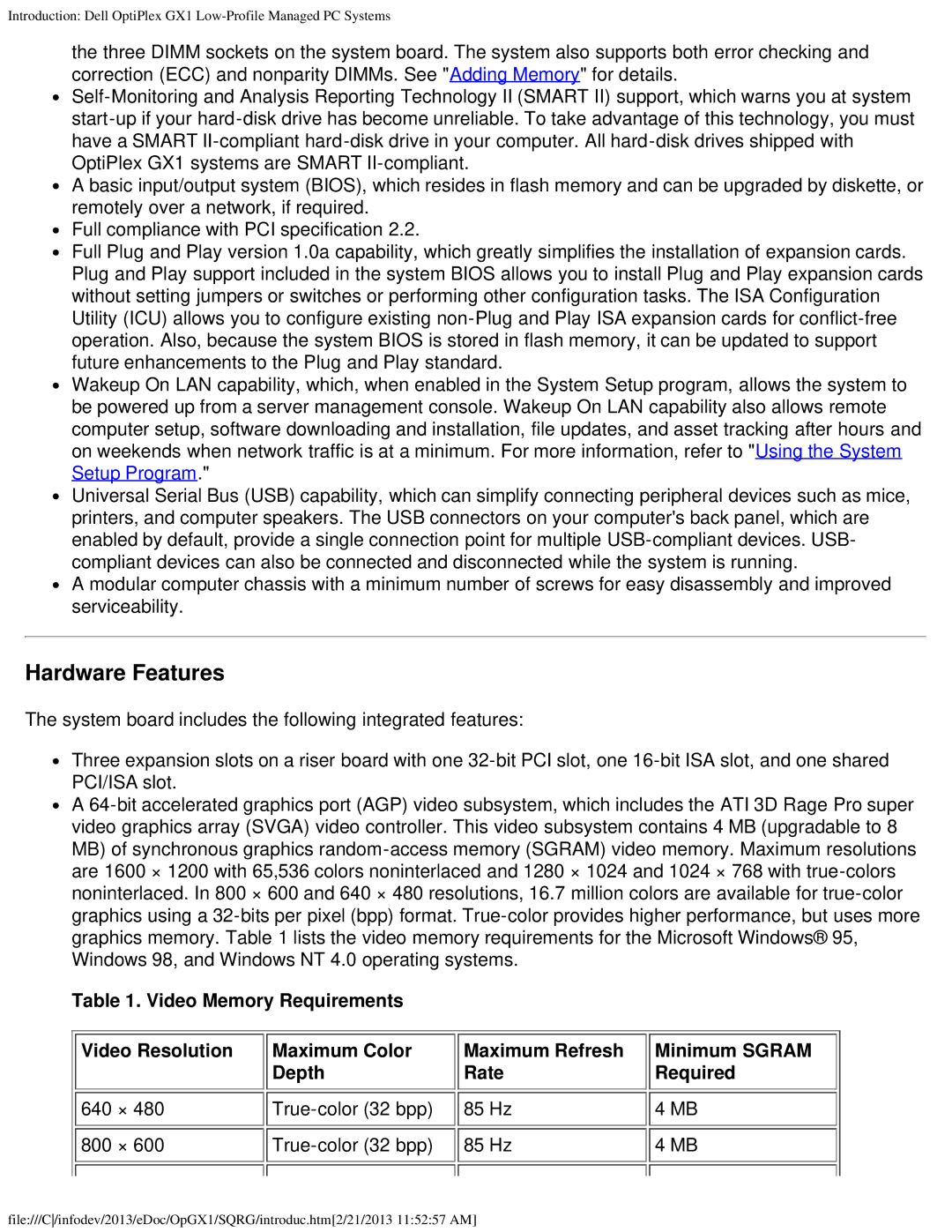
Introduction: Dell OptiPlex GX1
the three DIMM sockets on the system board. The system also supports both error checking and correction (ECC) and nonparity DIMMs. See "Adding Memory" for details.
![]()
![]() A basic input/output system (BIOS), which resides in flash memory and can be upgraded by diskette, or remotely over a network, if required.
A basic input/output system (BIOS), which resides in flash memory and can be upgraded by diskette, or remotely over a network, if required.
![]() Full compliance with PCI specification 2.2.
Full compliance with PCI specification 2.2.
![]() Full Plug and Play version 1.0a capability, which greatly simplifies the installation of expansion cards. Plug and Play support included in the system BIOS allows you to install Plug and Play expansion cards without setting jumpers or switches or performing other configuration tasks. The ISA Configuration Utility (ICU) allows you to configure existing
Full Plug and Play version 1.0a capability, which greatly simplifies the installation of expansion cards. Plug and Play support included in the system BIOS allows you to install Plug and Play expansion cards without setting jumpers or switches or performing other configuration tasks. The ISA Configuration Utility (ICU) allows you to configure existing
![]() Wakeup On LAN capability, which, when enabled in the System Setup program, allows the system to be powered up from a server management console. Wakeup On LAN capability also allows remote computer setup, software downloading and installation, file updates, and asset tracking after hours and on weekends when network traffic is at a minimum. For more information, refer to "Using the System Setup Program."
Wakeup On LAN capability, which, when enabled in the System Setup program, allows the system to be powered up from a server management console. Wakeup On LAN capability also allows remote computer setup, software downloading and installation, file updates, and asset tracking after hours and on weekends when network traffic is at a minimum. For more information, refer to "Using the System Setup Program."
![]() Universal Serial Bus (USB) capability, which can simplify connecting peripheral devices such as mice, printers, and computer speakers. The USB connectors on your computer's back panel, which are enabled by default, provide a single connection point for multiple
Universal Serial Bus (USB) capability, which can simplify connecting peripheral devices such as mice, printers, and computer speakers. The USB connectors on your computer's back panel, which are enabled by default, provide a single connection point for multiple
![]() A modular computer chassis with a minimum number of screws for easy disassembly and improved serviceability.
A modular computer chassis with a minimum number of screws for easy disassembly and improved serviceability.
Hardware Features
The system board includes the following integrated features:
![]() Three expansion slots on a riser board with one
Three expansion slots on a riser board with one
![]() A
A
Table 1. Video Memory Requirements
Video Resolution | Maximum Color | Maximum Refresh | Minimum SGRAM |
| Depth | Rate | Required |
640 × 480 |
| 85 Hz | 4 MB |
800 × 600 | 85 Hz | 4 MB |
file:///C/infodev/2013/eDoc/OpGX1/SQRG/introduc.htm[2/21/2013 11:52:57 AM]
